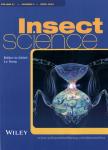The presence of six cryptic species of the whitefly Bemisia tabaci complex in China as revealed by crossing experiments
The presence of six cryptic species of the whitefly Bemisia tabaci complex in China as revealed by crossing experiments作者机构:Ministry of Agriculture Key Laboratory of Molecular Biology of Crop Pathogens and Insects Institute of Insect Sciences Zhejiang University Hangzhou Department of Entomology South China Agricultural University Guangzhou China
出 版 物:《Insect Science》 (昆虫科学(英文版))
年 卷 期:2011年第18卷第1期
页 面:67-77页
核心收录:
学科分类:0710[理学-生物学] 0830[工学-环境科学与工程(可授工学、理学、农学学位)] 07[理学] 09[农学] 0904[农学-植物保护] 0901[农学-作物学] 090402[农学-农业昆虫与害虫防治] 071002[理学-动物学] 0713[理学-生态学]
基 金:Financial support for this study was provided by the National Basic Research Program of China (2009CB 119203) the National Natural Science Foundation of China (30730061) and the Earmarked Fund for Modern Agro-industry Technology Research System of China
主 题:Bemisia tabaci biological invasion genetic diversity reproductive incompatibility systematics
摘 要:Recent phylogenetic analysis using mitochondrial cytochrome oxidase I (mtCOI) sequences ofBemisia tabaci worldwide indicates that the whitefly comprises at least 24 morphologically indistinguishable but genetically distinct cryptic species. While evidence of reproductive isolation has been reported for some of the putative species, more extensive crossing experiments are required to clarify the systematics of this species com- plex. In this study, we established laboratory cultures for six putative species ofB. tabaci collected in China. We conducted 22 inter-species crosses among the six putative species. The data and those reported previously were collated, and the combined dataset covered all the 30 possible inter-species crosses among the six putative species. Intra-species controls always produced female and male progeny and the proportions of females in the first gen- eration (F1) ranged from 56% to 70%. However, in inter-species crosses female progeny were rarely produced, and the few F1 females produced in four of the 30 inter-species crosses were either sterile or significantly weaker in viability. These results demonstrate a pattern of complete reproductive isolation among the six putative species and show that they are six cryptic species in the B. tabaci complex.



